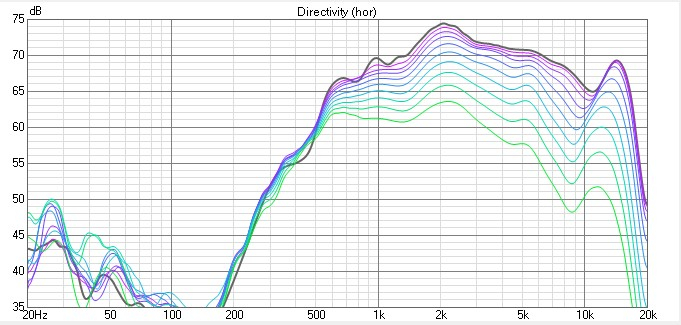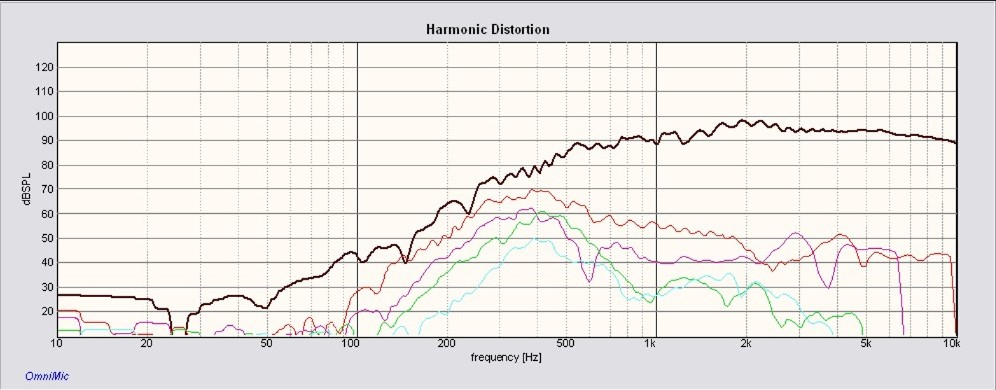Site Links
Howdy, Stranger!
It looks like you're new here. If you want to get involved, click one of these buttons!
Quick Links
Categories
In this Discussion
Who's Online (0)
MTM dispersion
The first 3-way I ever designed was a WWMTM. It was a fantastic learning experience but it was also a disaster of a speaker.
I largely abandoned it after designing a crossover that I thought measured well on axis, but the speaker sounded bad.
It's a nice looking speaker and I've been hesitatnt to scrap it. In fact, I recently offered it to a good friend of mine.
However, I loathe the idea of gifting such a deficient design, and so recently I attempted to completely redesign the crossover from scratch.
I've learned a lot since then, both theoritically and practically.
When I first dreamed this thing up, Zaph was still producing designs and the Statements were all the rage. I bought in to the whole controlled vertical directivity thing through driver layout and crossover points.
It would sure seem to me that the consensus has done a 180 though, and that's not to say there weren't any vigorous debates over MTM's back then because there were. But with all but the complete adoption of VituixCAD and CTA-2034, is there anyone left that thinks the inherint poor directivity index (DI) of an MTM is a good thing?
Which leads me to my question for the group: If you were restricted to designing an MTM today, is there a theoritical ideal you would shoot for?
For instance, do you implement steep slopes to cross the tweeter as low as possible to focus on the front lobe? Or do you implement shallower slopes that may lead to more comb-filtering, but result in a better directivity index?
I'm hesitant to bring up the specific drivers, but I will say the tweeter is waveguide loaded and measures pretty decently in cabinet. This will probably influence your response:

The resultant HD is pretty good too... so crossing LR4 at 1200Hz doesn't look out of the question:

Cheers!
Comments
The vertical lobing is the entire point of a MTM, it can help reduce reflections - which is important for first arrival. Don't get too hung up on the V-Cad crowd and their obsession with predicted in-room response. So yes, I am still OK with classical MTM, but I refuse to describe it as "poor" since it offers benefits that a typical 2-way does not.
That looks very much like a typical dome loaded in the Visaton wave guide.
At the end of the day, it is possible to have information overload, and the current trend (encouraged by amir among others) that there is some type of ideal response is not helping things. I am largely an objectivist, but the V-Cad/Klippel crowd takes it to a ludicrous extreme - I have heard to many outstanding designs that were done outside of their "ideals". So long story short, keep knocking shit together until you like what you hear. You may be surprised at what you come up with.
I have designed and built several MTMs and I like them a lot. But I did not know or care about the predicted in-room response. Now that I do know that, I am curious if the overall sound will change in my future designs.
Don't be surprised if it changes, but your room is not predictable within software, so you are still better off knowing your listening space and taking that into consideration. First arrival is still critical to overall tonality of a system.
If I remember correctly D'Appolito recommended 2/3 wavelength driver spacing and an Odd order network, both to increase the size of the main lobe vertically.
Bingo.
So closer spacing could be detrimental?
As long as you understand what the original intent of the design was, yes. Imagine if you have a vaulted ceiling and are obligated to keep your system to one side or other - those cancellations can definitely be beneficial. Are they ideal? No, but I have yet to see a perfect design so it is a compromise with purpose.
From Craig, way back in 2018 (https://diy.midwestaudio.club/discussion/comment/12135/#Comment_12135):
I think Joe D'Appolito started out with 3rd order Butterworth acoustic slopes on his MTM. Later he decided that 4th order Linkwitz-Riley worked better. I've done 3 MTM designs myself and have always targeted 4th order L-R slopes, with minor voicing tweeks. They all sounded very good to my ears and measured well.